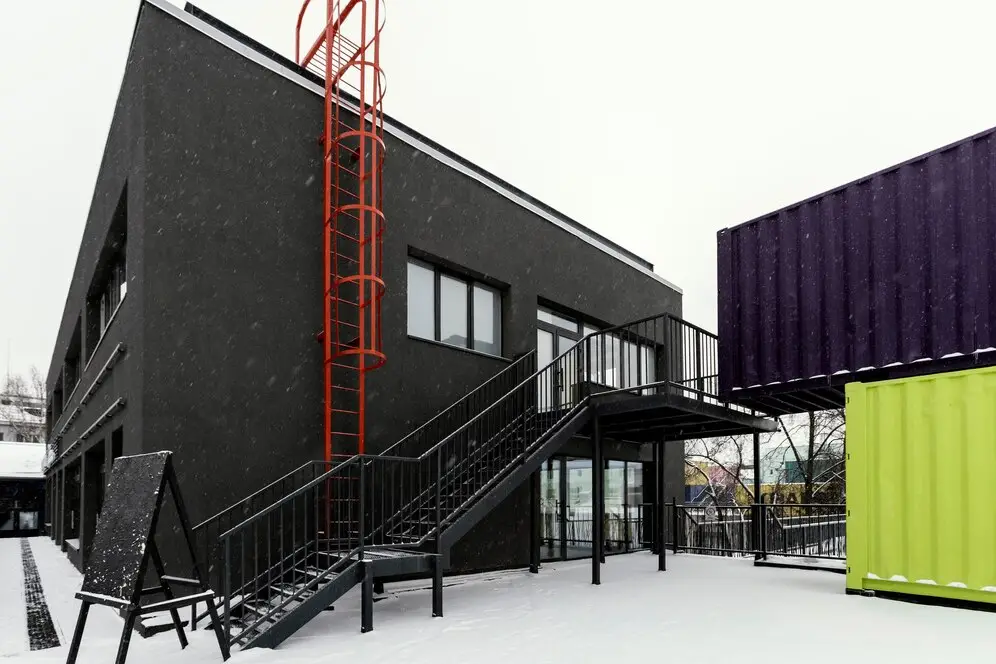Various new design types are transforming the architecture industry, driven by changing trends.
These modern strategies emphasize sustainability, functionality, and user views, which not only bring solutions to today’s societal problems but also take advantage of the advancements in technology and materials.
Sustainable design strategies are diversified, from elaborate passive house designs to modular construction, and every single design type has a unique possibility of creating spaces.
These designs provide high performance, are environmentally friendly, pleasant to the eye, and cope with changing needs. Through these inventive designs and types of architects, homeowners can imagine the future where the buildings aesthetically and functionally meet their surroundings.
Let’s take a closer look at some of the most innovative architectural design concepts defining the outlook of the architectural world beyond tomorrow.
1. Modular Construction
Modular construction is phenomenal in architectural design because it changes standard building practices by constructing components offsite and assembling them onsite. This process could be highly efficient because it reduces construction time, minimizes waste, and lowers overall expenses, all while maintaining good execution or high precision.
Modular buildings provide an unsurpassed degree of flexibility, scalability, and sustainability from small-scale single-family residences to large-scale multi-storied apartments.
As exemplified by Costas Constructions, weaving in the innovative fabric of the construction meets the needs of modern architecture. Also, it paves the way for more efficient, adaptable, and built environments of the future.
2. Passive House Design
A key feature of passive house design is its highly detailed construction process that ensures absolute optimization of energy efficiency within the buildings. This is achieved by implementing rigid insulation and a deliberate application of passive energy, which effectively substitutes for external heating and cooling systems.
Moreover, passive house design includes efficient features, including triple-pane windows, thermal mass components, and energy-recovery ventilation systems. These provide enhanced comfort within the room and reduce power consumption and greenhouse gas emissions.
This comprehensive approach to innovative architecture design promotes sustainability and helps to provide occupants with quality air that is beneficial to their health and the environment.
3. Biophilic Design
Biophilic design is a philosophy that means adding a space of nature to a building for the benefit of the building occupants. For instance, green roofs, living walls, and plenty of natural light are used as biophilic essentials to evoke productivity and creativity in the ambiance.
Through the stimulation of an emotional bond with nature, this approach to landscape design is effective in boosting the experiences of humans within the built environment.
In addition, this architectural design also promotes sustainability by cultivating a more profound understanding of nature’s beneficial roles. This thus creates opportunities for harmonious living between people and their surroundings.
4. Adaptive Reuse
Reusing existing buildings is a valid approach to sustainable urban development, bringing life to abandoned buildings with innovative architecture. The repurposing of existing buildings for alternative uses is a strategy that appreciates architecture and cultural heritage while saving waste and resources.
In changing historical depots into mixed-purpose places and old schools into modern residential lofts, these projects contribute to making the inner city green. Through adaptive reuse, communities remember their past while also choosing a sustainable future that is economically sound.
5. High-tech Smart Homes
High-tech smart homes, which merge creativity and technology with home life, offer people unique levels of comfort, convenience, and performance.
By using unified intelligent devices for lighting, temperature control, and safety and security, these homes create personalized and environmentally connected experiences.
Through energy-efficient solutions and data-based sensing, smart houses not only embody a green lifestyle but also provide environment mitigation.
By trying out those high-tech innovations, homeowners are actually leading to a better, smarter, more efficient, and environmentally friendly residential future.
6. Co-housing Communities
Co-housing communities are a way of transforming the used housing models, putting the accent on common activities, social gatherings, and co-living. By creating local neighborhoods on purpose, residents are provided with their own private living spaces with communal places like kitchens, gardens, and recreation areas.
Through community interaction and resource sharing, co-housing communities progress towards a model where environmental protection and social cohesion are a priority. As a result, residents experience the feeling of belonging and mutually support each other while building a more connected and stronger living space for everybody.
7. Vertical Forests
Vertical forests are a revolutionary architectural design concept that makes it possible to bring greenery into urban environments by building tall high-rises full of various vegetation.
Hence, these innovative structures create not only homes for plant species but also spaces for residents to live, thereby involving many environmental and socially positive outcomes.
Vertical forests work towards reducing high temperatures and improving air quality and biodiversity simultaneously while people enjoy green surroundings and lush scenery.
Through natural architecture, vertical forests stand for sustainable life at the core of urban cities and help shape the cities that are well-lived.
Conclusion
The innovative architecture designs and construction wonders explored herein represent a tapestry of innovation and human-centric principles that are shaping the future of construction.
From passive house design to co-housing communities, each concept offers unique solutions to contemporary challenges while fostering community engagement and environmental stewardship.
By embracing these design types, architects and homeowners alike are creating spaces that harmonize with their surroundings. Moreover, they are also contributing to a more sustainable, resilient, and inclusive future for generations to come.
Together, we embark on a journey toward a world where architecture serves as a catalyst for positive change and collective well-being.
